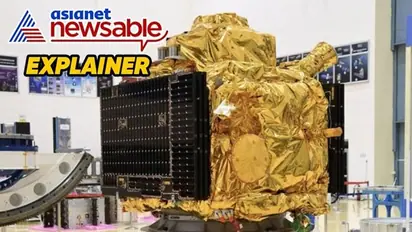Explained: XPoSat, India's first X-Ray Polarimeter Satellite

Synopsis
The XpoSat mission, utilizing the Polar Satellite Launch Vehicle (PSLV), is expected to have a lifespan of around five years and will contribute valuable insights into the nature and behaviour of the universe. Girish Linganna explains
The Indian Space Research Organisation recently announced its intention to launch India’s first X-ray Polarimeter Satellite (XPoSat) as part of a mission to investigate the polarization of high-intensity X-ray sources. The launch date for XpoSat on board the PSLV-C58 has been rescheduled from December 28 to January 1. Polarization, in this context, pertains to the specific orientation or arrangement of objects in a particular direction.
The XPoSat satellite is set to observe from a low-Earth orbit and will carry two scientific payloads. Equipped with these two payloads, the XpoSat mission can simultaneously investigate the time, characteristics of light and alignment aspects of intense X-ray sources.
The Two Payloads
1) The main payload, POLIX (Polarimeter Instrument in X-rays), is designed to gauge polarization parameters, including the degree and angle, within the 8-30 Kilo-electron Volt (keV) range of medium X-ray energy from celestial sources.
2) The XSPECT (X-ray Spectroscopy and Timing) payload on the XPoSat mission will furnish Spectroscopic information on energy levels ranging from 0.8 to 15 Kilo-electron Volts. (‘Spectroscopic’ refers to the detailed analysis or study of energy levels within the specified range -- 0.8-15 Kilo-electron Volts -- using techniques that involve the interaction of matter with electromagnetic radiation)
X-rays vs Electromagnetic Radiation
X-rays and electromagnetic radiation are both forms of radiation. But they differ in terms of their wavelengths. X-rays have much shorter wavelengths, measuring in the range of 0.01 to 10 nanometers, while electromagnetic radiation covers a broader spectrum with wavelengths ranging from nanometers (visible light) to kilometres (radio waves).
This distinction in wavelengths affects their properties and interactions. X-rays possess higher energy and can penetrate different materials, making them useful in medical imaging and scientific research. In contrast, electromagnetic radiation encompasses various forms -- such as radio waves, microwaves, infrared, visible light, ultraviolet and gamma rays, each with specific applications and behaviours in the electromagnetic spectrum.
Mission Objective
1) The mission aims to measure the polarization of X-rays in the energy range of 8-30 KeV emitted from X-ray sources
2) It involves conducting extended observations of cosmic X-ray sources in the energy range of 8-15 KeV, focusing on their spectral and temporal characteristics over a long period of time. (Cosmic X-ray sources refer to such celestial objects as blackholes, neutron stars and active galaxies that emit X-rays from their surroundings. These sources emit high-energy X-ray radiation due to intense gravitational forces or other energetic processes, providing valuable insights into the nature and behaviour of the universe)
3) The mission is estimated to have a lifespan of around five years
4) The instruments on XpoSat will observe X-ray sources while the spacecraft passes through Earth’s shadow, specifically during eclipse
5) The XpoSat will be sent into space using the Polar Satellite Launch Vehicle (PSLV). The launch will take place at the Satish Dhawan Space Centre located at Sriharikota
6) The XpoSat, also known as the X-ray Polarimeter Satellite, is India’s first dedicated mission aimed at studying the behaviour of bright astronomical X-ray sources in extreme conditions
Significance of the Mission
1) The emission process from different astronomical sources, such as black holes, neutron stars, active galaxies and pulsar wind nebulae are the result of complicated physical mechanisms, making them difficult to comprehend and study
* Blackholes: Extremely dense objects with intense gravitational pull from which not even light can escape
* Neutron stars: Small, but incredibly dense, stars formed when massive stars collapse, composed mainly of neutrons
* Active galaxies: Galaxies with unusually high energy output, often due to a super-massive black hole at their centre
* Pulsar wind nebulae: Nebulae formed by the interaction of high-speed particles ejected from pulsars (rapidly spinning neutron stars)
2) Although space-based observatories provide valuable spectroscopic and timing data, the precise nature of emissions from these sources remains a perplexing challenge for astronomers
3) Polarimetry serves as a valuable tool for understanding the emission processes occurring in astronomical sources
4) The measurements of polarimetry contribute two additional dimensions to enhance our understanding of the extent and direction of polarization
Stay updated with the Breaking News Today and Latest News from across India and around the world. Get real-time updates, in-depth analysis, and comprehensive coverage of India News, World News, Indian Defence News, Kerala News, and Karnataka News. From politics to current affairs, follow every major story as it unfolds. Get real-time updates from IMD on major cities weather forecasts, including Rain alerts, Cyclone warnings, and temperature trends. Download the Asianet News Official App from the Android Play Store and iPhone App Store for accurate and timely news updates anytime, anywhere.